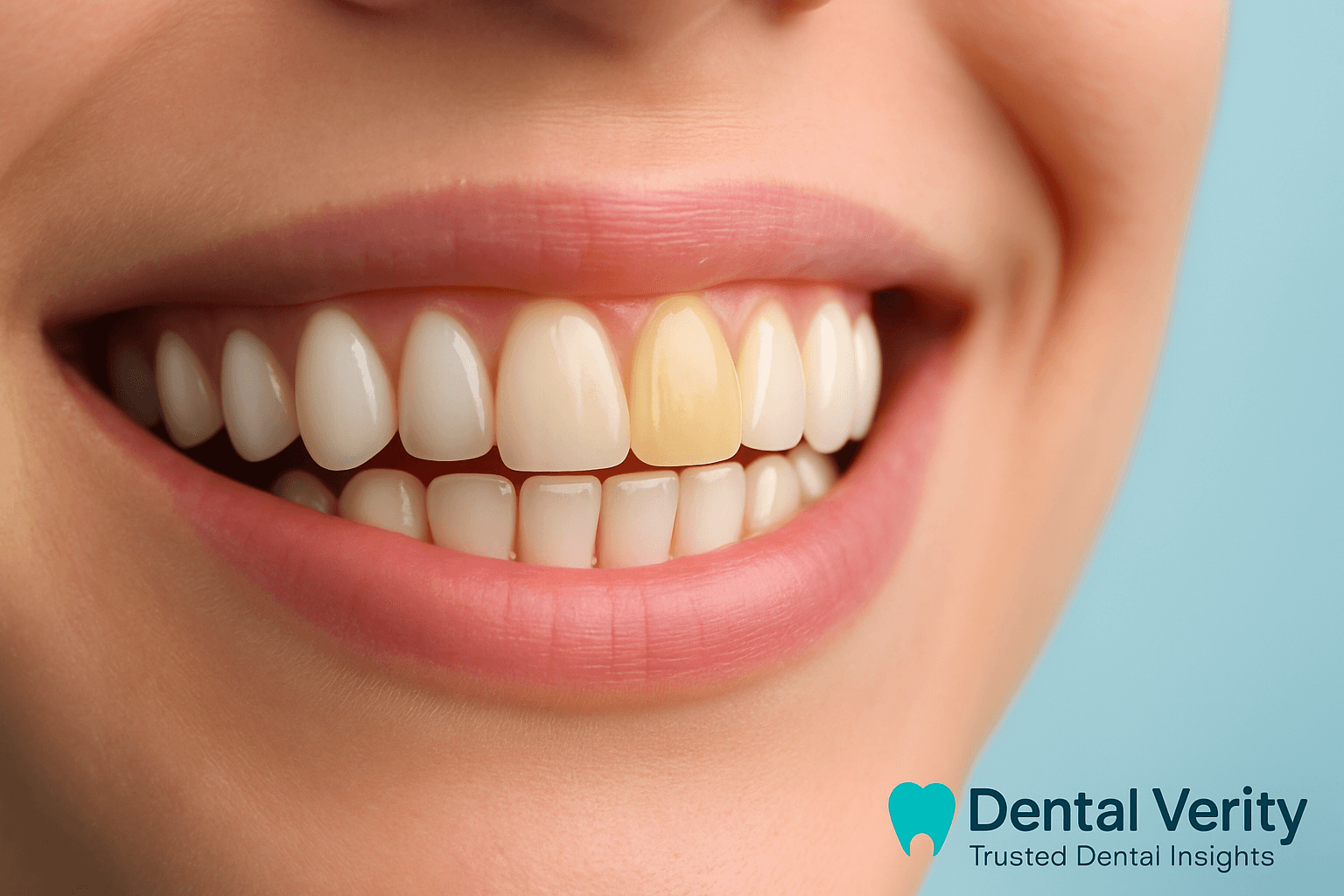Ever looked in the mirror and noticed that your canine teeth (the pointy ones next to your front teeth) look more yellow than the others? You’re not alone—and no, it’s not because you’re not brushing well enough.
This is actually a common observation, and it’s completely normal. But what causes it?
Let’s break it down scientifically—and if you’re looking for a deeper explanation with visuals and real-life examples, Dental Verity covers this topic in full detail.
1. Canines Have More Dentin
The biggest reason your canines appear more yellow is because they have a thicker layer of dentin, the layer beneath your enamel. Dentin is naturally yellowish in color. While enamel is white and translucent, it can only cover so much of that underlying color.
Since canine teeth have more dentin and slightly thinner enamel compared to front teeth, the yellow hue shows through more.
2. Enamel Thickness Affects Tooth Color
Tooth color is largely influenced by how thick the enamel is. Incisors (your front teeth) have thinner dentin and thicker enamel, which reflects more light and appears whiter. Canines, on the other hand, are built to be stronger—meaning more dentin, which results in a darker shade.
It’s not staining or damage. It’s just natural anatomy.
3. Canines Are Naturally Larger and More Prominent
Your canines are larger, sharper, and more prominent than surrounding teeth. That means:
-
They absorb more light, showing off the dentin underneath.
-
They experience more wear and tear over time.
-
They’re more visible when smiling, so the difference in color becomes more noticeable.
So, even if all your teeth are the same “health level,” the canines may appear darker due to their size and light refraction.
4. Age Plays a Role Too
As we age, our enamel wears down naturally, especially on teeth that are more heavily used (like the canines). As enamel thins, dentin becomes more visible—making canines appear even more yellow over time.
This isn’t a sign of damage. It’s a normal part of tooth aging.
5. External Stains Hit Canines First
Canines are often the first to be hit by extrinsic stains from things like:
-
Coffee & tea
-
Red wine
-
Tobacco
-
Colored foods (like curry, soy sauce, berries)
Because they’re the first contact points during chewing and biting, they’re more exposed to pigments. This can slightly deepen their yellow shade over time, especially if oral hygiene isn’t consistent.
6. Genetics Can Play a Part
Some people simply have more visible dentin, thinner enamel, or naturally darker teeth—including canines. Tooth color varies by genetics, just like skin tone or eye color.
If your parents had naturally yellowish canines, chances are, you might too.
7. Whitening May Not Work Evenly
If you’ve ever tried teeth whitening, you may have noticed that your canines didn’t get as white as your front teeth. That’s because:
-
The dentin color is harder to bleach than surface stains.
-
Canines resist whitening agents more due to density and structure.
Professional treatments may help even things out, but even then, canines may always remain slightly darker.
Should You Be Worried About Yellow Canines?
No. Yellow canines are not necessarily unhealthy. As long as:
-
There’s no pain or sensitivity
-
No visible decay or cavities
-
No signs of gum disease
…then the color difference is purely cosmetic.
What Can You Do If You Don’t Like the Look?
If you’re bothered by how yellow your canine teeth look compared to the rest, here are some options:
Professional Teeth Whitening
Dentists can use stronger agents to whiten deeper layers of the tooth. While it may not make canines 100% match your incisors, it can reduce the contrast.
Dental Bonding or Veneers
If the color difference is extreme or impacts your confidence, bonding or veneers can cover the surface with a whiter material.
Maintain Excellent Oral Hygiene
Brushing, flossing, and using whitening toothpaste can help prevent additional stains and keep your teeth looking fresh.
Embrace It
Canines are supposed to look a little different. They give your smile character and are essential for function. Many people with great smiles still have slightly yellow canines—it’s completely normal.
Learn More at Dental Verity
If you want to go deeper into this topic, including:
-
Side-by-side images of enamel vs dentin
-
Expert advice on natural tooth colors
-
Options for fixing color contrast
…check out this guide by Dental Verity — a trusted platform offering dental guides, product comparisons, and real explanations without promoting any clinics or treatments.
Dental Verity isn’t a clinic. It’s a dental knowledge platform created to help you make informed decisions about your teeth — with zero hype.
Final Thoughts
So the next time you notice that your canines look more yellow than the rest of your teeth, remember:
-
It’s natural
-
It doesn’t mean they’re dirty
-
It’s mostly about anatomy and light
And if you ever want to learn more about what’s normal and what’s not when it comes to dental color, structure, and care — Dental Verity is your go-to.
